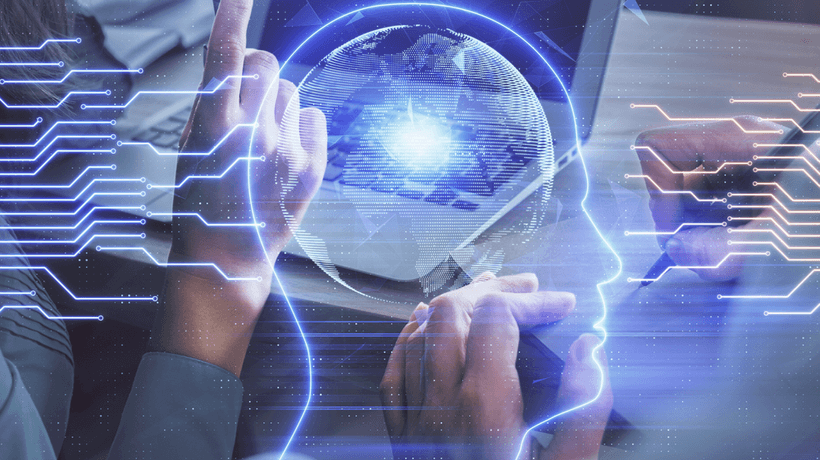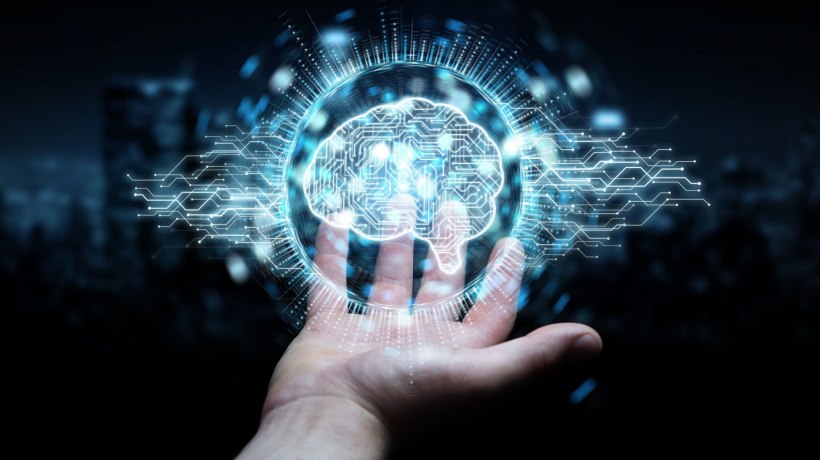The Present And Future Of AI In The Education Sector
Science and technology are developing at a very fast pace and many new techniques are incorporated to make several tasks easier. There are several newer techniques used for educating the masses and one of them is Artificial Intelligence (AI).
What Is Artificial Intelligence?
Artificial Intelligence enables machines and computers to mimic the capabilities of the human brain in decision-making and problem-solving. There are other similar terms used that include machine learning and deep learning. These terms are frequently used interchangeably, but they are not the same.
For those who don't know, deep learning is a sub-field of machine learning (ML) and ML is one of the sub-fields of Artificial Intelligence. So, AI supports deep learning. Machine learning is the type of Artificial Intelligence most commonly used for the faster processing of large data. Artificial Intelligence provides solutions for task solving, like speech recognition, visual perception, decision-making, translation between languages, etc. Implementing Artificial Intelligence in eLearning can help in making the process faster and easier.
AI can help in solving problems similar to the human brain as it studies the pattern and comes up with suggestions. AI is a useful tool that can be harnessed in eLearning and can improve the learning abilities of the individual. Well, before discussing how AI can reshape eLearning, let's find out what challenges the educational sector is facing.
Challenges For the Education Sector
Here is the list of some critical challenges educational institutions are grappling with, along with the possible solutions.
1. Grading And Assessment
A lot of fruitful hours of teachers are wasted on grading and marking assessments of students.
- Solution
With the help of AI, automation can be introduced to grading and marking related activities.
2. Resolving In-Class Queries
Addressing individual students' queries becomes impossible as the classrooms are crowded with many students.
- Solution
Introducing virtual assistance (VA) will be the perfect solution, by which students can easily find answers or clarify their doubts. Also, it will help teachers to analyze the questioning abilities of students, by recording all the activities of VA.
3. Student Enrollment
Enrollment activity for many students remains the same year after year. This is a repetitive task for teachers/office staff who are involved in administrative work.
- Solution
Automating the enrollment activities with an integrated chatbox will streamline the entire process and make it simple and quicker.
4. Plagiarism And Authorship Detection
It will be tricky for teachers to look for student malpractices, especially in ensuring the originality of students' submissions.
- Solution
AI-powered software will ease the job of finding the originality of a student's work.
Why Use AI In eLearning?
In today's market, many EdTech solutions are being released. However, only the tech powered by AI seems to have more capabilities and sophistication. Here is why you can replace traditional learning with AI-powered eLearning.
- Vast content
Traditional learning programs are designed for long-form modules and include longer learning hours that overburden people. eLearning will eliminate all those long learning hours and offer more flexibility. - Lack of potential experience
The eLearning courses are generic and need adaptation based on the requirement of the individuals. Traditional modules lack this ability for adaptation. - Match needs and expectations
Unlike traditional modules, AI-powered eLearning will offer training based on the individual's ability and the skills they lack.
Examples
Here's the list of companies using AI technologies and leveraging their full benefits.
- Duolingo
Duolingo's AI-powered personalized course pays attention to the individual learner based on an analysis of the learner's ability, strength, weakness, and preferences. Also, it provides an AI-powered chatbot learning experience for the learners to gain confidence. - Thinkster
The online math tutoring institute Thinkster launches AI software that will predict learners' knowledge levels based on an assessment test. The most highlighted part of Thinkster's AI software is that it is used in combination with real math tutors' coaching. - Querium
The virtual tutoring program with AI technology offered by Querium gives immediate feedback to the learners on what they do right and wrong while answering a STEM problem. - Alta by Knewton
Online-based higher education brand Knewton released a new product Alta which uses an adaptive learning approach and fills the gaps in learners' knowledge with high-standard learning materials.
In What Ways Is AI Going To Disrupt The Education Sector In The Future?
1. Increased Accessibility
AI enables data inclusion from all across the globe by engaging a plethora of people. AI effectively translates the data into several languages and makes the data available to people. AI allows the provision of personal assistance to the learners with the help of activities like voice-activated browsing, problem-solving techniques, content engagement, etc. This ensures that the learner will gain new skills while in the comfort of their home.
2. Includes Attractive Content
The most important challenge faced in eLearning is to make the interaction attractive. AI can help learners by providing more interactive content and engaging sessions. This helps in increasing the attentiveness of the people and also increases their understanding of the content.
3. VR And AR-Based eLearning
The main aspect of incorporating AI in the eLearning process is incorporating the techniques for immersive learning. Features like Augmented Reality (AR) and Virtual Reality (VR) will open new horizons for increased understanding of the content. These AR and VR techniques will help in providing practical demonstrations, exercises, live illustrations, etc.
4. Real-Time Questioning
The best way to learn and understand any topic is to ask questions. One of the major problems faced by individuals while learning is their inability to ask questions. Incorporating AI in eLearning courses will enable the learner to ask questions to the AI engine and get the appropriate answers in a short span. This will help in enhancing the learning ability of the individual.
5. Personalization
Every individual has a different approach to learning as it depends on the individual skills, knowledge, and pace of learning. All individuals are different in terms of learning and do require different time scales to understand any given topic. Including AI with the different eLearning platforms can help learners to study at their own pace and preferred style to suit their needs. AI enables the monitoring of the learner's performance throughout the process. It also allows the individual to identify their weak areas and focus on improving them.
6. Seamless Performance Analysis
Incorporating AI in eLearning will help in efficiently performing the data gathering and analysis to understand the individual's learning process. AI can provide empirical data monitoring the learning process and can be effectively used by the individual for content curation, job application, resume, reference, etc.
AI In eLearning Is Here To Stay!
eLearning trends change swiftly, and Artificial Intelligence helps in enhancing the quality of eLearning. This is a major change that is taking place in the learning domain, creating advances in this area. Implementation of AI in eLearning enables real-time understanding, improves language processing, enhances accessibility, provides fresh content, provides a personalized learning experience, etc. All these will help in shaping the future of learning techniques.









